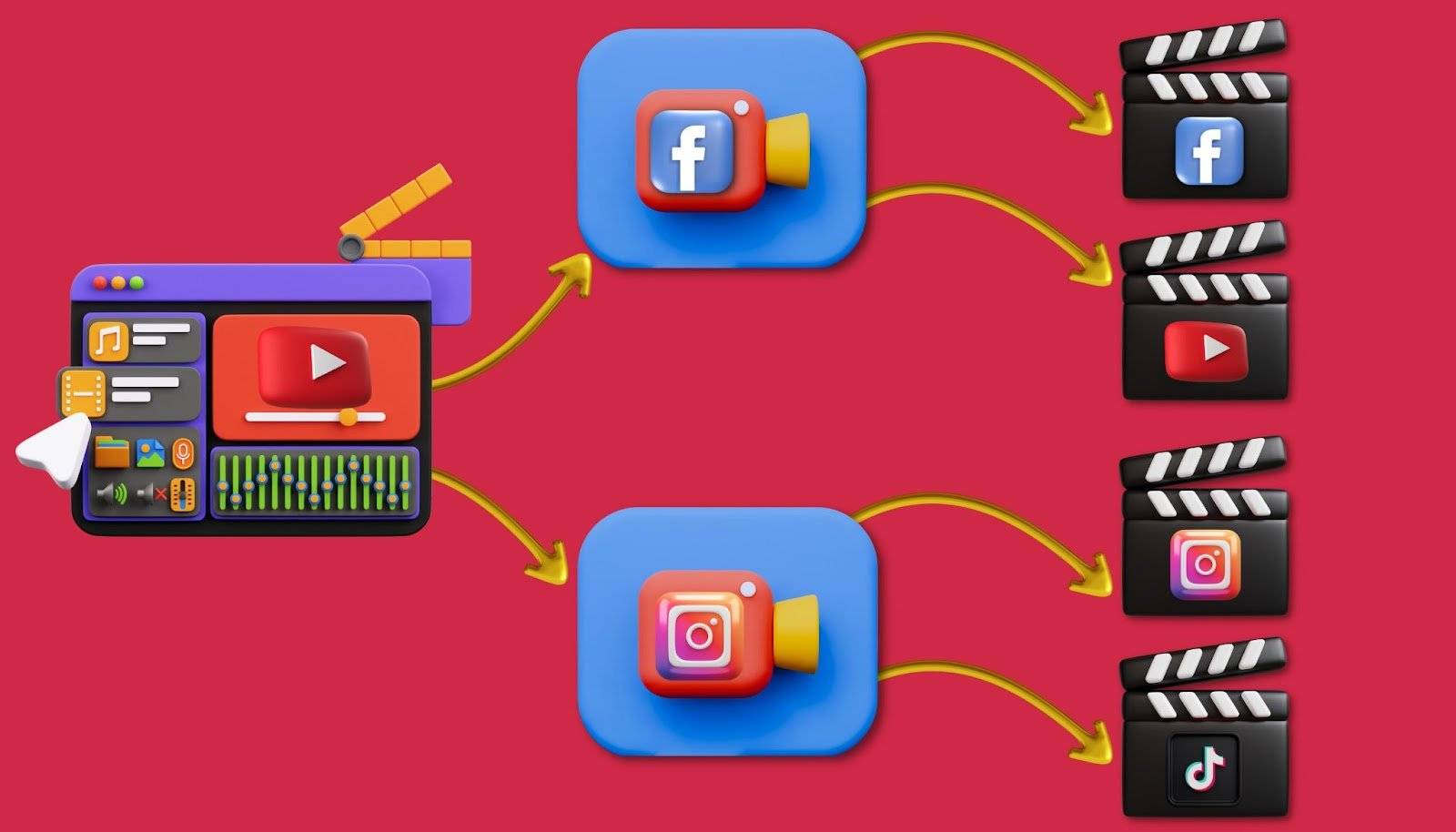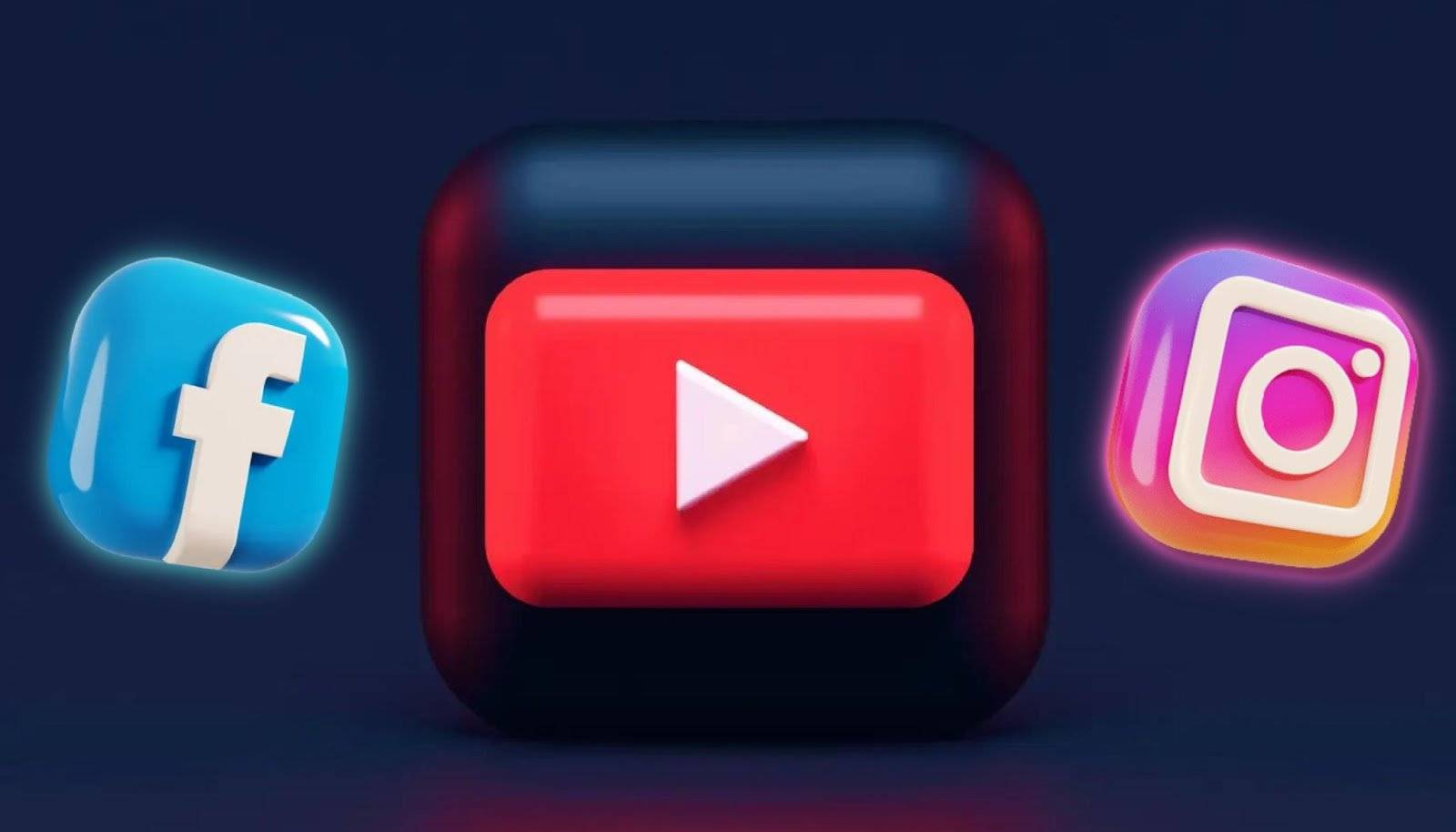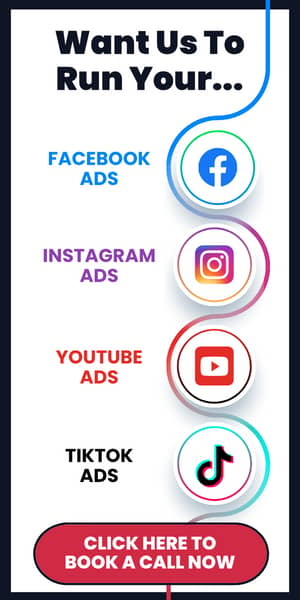You want to learn how to do media buying right but you aren’t sure what the best strategy is – don’t worry, because we’ve got you covered. As the digital world continues to evolve, effective media buying has become an indispensable skill for businesses aiming to maximize their reach, engagement, and impact.
In this comprehensive blog, we’ll explain the core concepts, reveal the latest trends, and equip you with the tools needed to craft compelling campaigns that resonate with your target audience.
From understanding the nuances of different ad spaces to strategizing for optimal results, we’ll walk you through every step of the journey. Discover the secrets of successful media buying and transform your advertising efforts into the success that you know is possible.
Media Buying 101: What Is It & Why Do You Need It?
At a high level, media buying is the process of purchasing placement on various different mediums such as social media platforms, television, radio, print publications and more.
There are two different types of media buying: Brand Awareness Strategy and Direct Response.
Media Buying For Brand Awareness
Brand awareness campaigns concentrate on expanding a brand’s visibility by reaching a diverse audience across multiple channels. These campaigns use emotionally impactful creative elements to forge a strong brand association rather than driving immediate action to effectively connect with the target audience and allocate budget accordingly for maximum exposure.
Here are the elements often looked at for successful media buying for brand awareness:
Focus on Reach and Visibility: Brand awareness campaigns aim to introduce a brand to a broader audience and increase its visibility. Media buying in this context often prioritizes reaching a wide audience across various channels.
Metrics: Key metrics for brand awareness campaigns include metrics like reach, impressions, frequency (how often an individual sees the ad), and brand recall. These metrics help measure the campaign’s effectiveness in increasing brand visibility and recognition.
Creative Elements: Creative assets in brand awareness campaigns tend to focus on delivering a memorable and emotionally resonant message. They aim to create a strong impression and association with the brand rather than driving an immediate action.
Channels: Media buyers for brand awareness may choose a mix of high-reach channels such as television, outdoor billboards, online display ads, and social media. The emphasis is on being present where the target audience spends their time.
Budget Allocation: Brand awareness campaigns may allocate a larger portion of the budget to broader, higher-reach channels to maximize exposure and reach a wider audience.
Media Buying For Direct Response – What We Specialize In
Direct response campaigns center on driving immediate actions, such as filling out opt-in forms and scheduling calls, that are measurable and traceable. Key metrics like conversion rate, CTR, CPA, and ROAS gauge their effectiveness in generating specific responses.
Budget allocation is strategically focused on proven conversion-driving channels and placements, while real-time tracking and optimization play a significant role in maximizing ROI.
Focus on Conversions and Actions: Direct response campaigns aim to encourage immediate actions from the audience which for coaches and consultants is filling out a form and booking a call to sell them a product. Media buying strategies in this context are geared towards driving measurable and trackable actions.
Metrics: Key metrics for direct response campaigns include conversion rate, click-through rate (CTR), cost per acquisition (CPA), and return on ad spend (ROAS). These metrics help evaluate the campaign’s success in generating specific actions.
Call-to-Action (CTA): Creative assets in direct response campaigns prominently feature a clear and compelling call-to-action. The focus is on motivating the audience to take the desired action immediately.
Channels: Media buyers for direct response campaigns often prioritize channels that are more likely to drive actions, such as search engine advertising (Google Ads), social media advertising (Meta Ads), email marketing, and display ads with strong CTAs.
Budget Allocation: Direct response campaigns typically allocate budgets more strategically, focusing on channels and placements that have proven to deliver conversions efficiently. There’s often an emphasis on tracking and optimizing campaigns in real-time to maximize ROI.
Why should you care about the distinction?
The distinction matters so that you know which strategy to use to reach your goals.
If your goal is to get conversions and you’re using strategies built for brand awareness, then you’ll likely fail in your efforts.
If your goal is to build brand awareness but you’re giving strong CTAs, the audience might not be ready to take that action yet.
Coaches and consultants are primarily leveraging direct response-based media buying in order to create big results for their businesses.
Media Planning vs Media Buying
What is media planning and how do we use it?
Media planning is the strategic process of determining where and how to advertise to achieve campaign goals.
We like to use this analogy to describe the importance of media planning: If you only have 9 hours to cut down a tree, then spend 8 hours sharpening your ax.
This analogy emphasizes the importance of preparation before execution. Spending a lot of time in preparation allows you to have a successful execution.
What is media buying then compared to media planning?
Media buying then involves the execution of purchasing ad placements on selected media channels and optimizing their performance.
To refer back to the ax analogy, this is the hour you spent actually cutting down the tree.
The Best Media Buying Process to Increase Your Ad Space
These are the 12 elements in our process to get results with media buying.
Set Clear Goals: Begin by defining specific and measurable campaign goals. Are you aiming for sales, leads, website visits, brand awareness, or something else? Setting clear objectives will guide your entire media buying strategy.
Know Your Audience: Understand your target audience’s demographics, behaviors, interests, and preferences. This knowledge will help you select the most relevant media channels to reach them effectively.
Data Analysis: Leverage data and analytics to inform your decisions. Use historical data if available and conduct market research to identify trends, audience insights, and competitor strategies. Having accurate data is as important as analyzing data, so we highly recommend using third-party tracking platforms outside of the traditional data provided to you by advertising mediums such as Google or Facebook.
Allocate Budget: Allocate your budget strategically based on your campaign goals and the cost-effectiveness of different media channels. Prioritize channels that have a proven track record of delivering results in terms of your desired outcomes. Testing platforms side by side will be a great way to diversify your portfolio and not put your eggs all in one basket.
You could find that your offer does exceedingly well on one platform and not so great on another. You could also find that your offer does exceedingly well across multiple platforms which gives you a lot more leverage and ability to scale.
Media Planning: Develop a comprehensive media plan that outlines which media channels you’ll use, the timing and frequency of placements, and the estimated costs. Ensure that your plan aligns with your target audience and goals.
Creative Alignment: Ensure that your creative assets are aligned with the selected media channels and audience preferences. Tailor your messaging and visuals to resonate with each platform’s unique characteristics.
An ad you release on YouTube is going to be much different than an ad you release on Instagram. You can’t just use the same ad across multiple platforms. It requires a repurposing process in order to optimize an ad for multiple platforms.

The repurposing process we recommend is to start by making the video for YouTube, then you can break it down for Facebook and Instagram, and then from there, you can break it down further for your short ads on YouTube Shorts, Facebook Reels, Instagram Reels, and TikToks.
Optimization: Use the data collected during monitoring to optimize your campaign. Identify which channels, placements, and creative variations are performing best and allocate more budget towards them. Likewise, adjust or remove underperforming elements. Our cut-off rate for underperforming ads is 2X – 3X out of target KPI.
Here’s an example:
Target KPI’s:
$5.00 Cost Per Click,
$20.00 Cost Per Lead,
$150 Cost Per Call,
$1,500 Cost Per Acquisition
Cut-Off Rate:
$10 – 15 Cost Per Click,
$40 – $60 Cost Per Lead,
$300 – $450 Cost Per Booked Call,
$3,000 Spent Without An Acquisition
A/B Testing: Implement A/B testing for different ad creatives, headlines, calls-to-action, and landing pages. Testing helps you identify which elements are driving higher engagement and conversions. A/B testing is a standard protocol for driving improvement on your marketing efforts.
ROI Calculation: Calculate your ROI by comparing the revenue generated from the campaign to the total costs, including media spend and other expenses. This will help you understand the campaign’s profitability. Judging ROI is going to give you the best indication of whether to turn your campaign off or to keep pushing more budget to it.
Regular Reporting: Regularly generate and analyze reports that detail the campaign’s performance, highlighting key metrics and insights. These reports can guide future decisions and demonstrate the campaign’s impact.
We recommend looking at your campaigns on a daily basis and analyzing reports for today, yesterday, last 7 days, last 14 days, and last 30 days in order to observe continuous trends related to your account.
Continuous Learning: Media landscapes and audience behaviors evolve. Stay informed about industry trends, new technologies, and changes in consumer habits. Apply these insights to refine your strategies over time.
AI is a huge topic of discussion right now and it can be used to massively reduce the amount of time it takes to output copy materials and images to use for your advertisements.
Scale and Repeat: Once you identify strategies and channels that consistently deliver strong ROI, consider scaling your efforts. Expanding your successful media buying strategies can further enhance your overall ROI.
3 Media Buying Platforms to Try in 2023

Platform #1: Facebook
Facebook advertising offers a host of compelling reasons why businesses should consider integrating it into their marketing strategies.
12 Reasons To Try Facebook Advertising For Your Business
- The platform’s massive user base provides an unparalleled reach to a diverse audience spanning across demographics, interests, and regions.
- Precise targeting options allow advertisers to tailor their campaigns to reach specific segments, ensuring that their message resonates with the right people.
- Cost-effectiveness is another advantage, with various budgeting options that cater to businesses of all sizes.
- The availability of various ad formats enables creative flexibility, allowing brands to choose the most suitable format to convey their message effectively.
- Given the widespread use of mobile devices, Facebook advertising ensures mobile reach, making it easy to connect with users on the go.
- Engagement and interaction are inherent in the platform’s social nature, enabling businesses to foster meaningful connections and conversations with their audience.
- The retargeting opportunities allow advertisers to re-engage users who have already shown interest, enhancing conversion rates.
- Utilizing lookalike audiences leverages the platform’s data to find users with similar attributes to existing customers, expanding the potential reach.
- Diverse campaign goals accommodate various marketing objectives, from brand awareness to lead generation and sales.
- Ad creation is easy on Facebook with its user-friendly, intuitive tools that simplify the ad creation process.
- The audience insights provided by the platform offer valuable data that can refine targeting strategies and guide content creation.
- Facebook serves as a platform for building and nurturing audiences. Brands can use the platform to develop loyal communities around their products or services, fostering long-term relationships and customer loyalty.
With these 13 reasons, Facebook advertising is an effective tool for businesses seeking to enhance their online presence and achieve their marketing goals.
Platform #2: Instagram
Instagram ads offer a range of compelling benefits for businesses looking to tap into the power of visual storytelling and engage with a massive and diverse user base.
7 Reasons To Try Instagram Ads For Your Business
- With a massive user base spanning across demographics, Instagram provides an excellent opportunity to reach a broad audience and expand brand visibility.
- As a visual platform, Instagram is tailor-made for showcasing products and services through captivating visuals.
- Its engaging content formats, such as photo posts, carousel ads, and video ads, enable businesses to convey their message creatively and authentically, resonating with users on a visual and emotional level.
- The high user engagement on Instagram is a significant draw for advertisers. Users actively seek out and engage with content, making it a fertile ground for brands to connect with potential customers. The platform’s visually appealing nature encourages users to spend more time browsing through posts and ads, creating a conducive environment for brand exposure.
- Precise targeting options on Instagram allow businesses to refine their campaigns and ensure that their message reaches the most relevant audience. Advertisers can target based on factors like demographics, interests, behaviors, and even specific locations, increasing the likelihood of connecting with users who are genuinely interested in their offerings.
- Story ads on Instagram offer a unique way to engage users through immersive full-screen visuals. Businesses can leverage the storytelling capabilities of this format to create narratives that resonate with their audience and drive action.
- Reel ads tap into the trend of bite-sized video content, enabling businesses to capture attention quickly and effectively.
Incorporating Instagram ads into a marketing strategy can yield significant benefits, from expanding reach and engagement to nurturing brand loyalty and driving conversions. It is a dynamic platform for businesses to connect with their audience in meaningful and visually compelling ways.
Platform #3: YouTube
YouTube ads offer a wealth of opportunities for businesses to connect with a vast and engaged audience through the power of video.
11 Reasons To Try YouTube Ads For Your Business
- With a massive audience, YouTube serves as a prime platform to increase brand exposure and reach potential customers on a global scale.
- As a video-centric platform, video ads can effectively convey narratives and showcase products or services.
- Leverage visual storytelling to create emotional connections with viewers, fostering a deeper engagement that text or images might not achieve.
- The high engagement levels on YouTube means users actively seek out and engage with video content, making it an ideal platform for businesses to capture attention and maintain interest.
- Given YouTube’s integration with Google, businesses can tap into the wealth of data and targeting options available through Google Ads.
- Ads can be precisely targeted to reach the right audience based on demographics, interests, search behavior, and more.
- In-Stream ads, which play before or during YouTube videos, provide a seamless way to connect with viewers. These ads can be skippable or non-skippable, offering flexibility in capturing attention and delivering messages effectively.
- Call-to-Action overlays further enhance engagement by providing a direct link to the business’s website or landing page.
- Placement flexibility allows advertisers to choose where their ads appear. From in-stream ads to display ads, businesses can tailor their strategy to match the viewing habits and preferences of their target audience.
- Mobile accessibility ensures that ads are viewable across various devices, reaching users wherever they are.
- Retargeting users who have previously engaged with a brand’s content, businesses can reinforce their message and encourage conversions. This strategic approach capitalizes on existing interest and increases the likelihood of driving desired actions.
Incorporating YouTube ads into a marketing strategy provides numerous benefits, from expanding brand reach and engagement to leveraging the storytelling potential of video. With its massive audience, engaging format, and precise targeting capabilities, YouTube offers businesses a versatile platform to convey their message and achieve their marketing goals.
Use the Right Media Buying Strategy for Your Ad Space
Mastering the art of media buying is essential for businesses aiming to amplify their reach and influence with paid ads. Strategies that lead to effective media buying are always evolving and media buying is an essential skillset to maximize engagement and leave a lasting impact.
Use the tips in this article to get media buying right. From unraveling the intricacies of various ad spaces to formulating strategies that yield optimal results, we’ve walked through every phase of the process. Our intention is to empower you with the secrets of successful media buying so that your paid advertising is successful.
Understanding that media buying isn’t a one-size-fits-all endeavor, we’ve emphasized the pivotal distinction between Brand Awareness Strategy and Direct Response. This distinction guides you depending on your marketing goals.
Now it’s your turn to try media buying that aligns with your aspirations.
If you’d like support from our team of experts to scale your campaigns and elevate your brand’s voice above the noise, book a call with us. We will guide you through the best next steps for you based on where you’re at right now.
Let’s transform your advertising potential into a resounding success. Book a call now and let us help you scale your ads.


